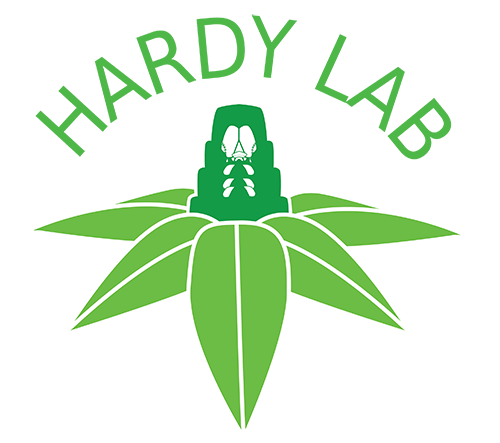Valid Names Results
Ortheziola Šulc, 1895 (
Ortheziidae)
Nomenclatural History
- Ortheziola
Šulc
1895: 1.
Type species: Ortheziola vejdovskyi Šulc
by monotypy
.
accepted valid name
Remarks
- Systematics: Ortheziola is similar to Mixorthezia and Nipponorthezia by having four or fewer antennal segments. Ortheziola differs from Mixorthezia by having the wax plates coalesced and not placed segmentally, the tibia and tarsus fused, two or fewer spine bands inside the ovisac band, thumb-like pores near the anal ring, triad of setae on each side of the labium and hair-like claw digitules. Mixorthezia has the wax plates placed segmentally, the tibia and tarsus separate, more than 2 spine bands inside the ovisac band, no thumb-like pores, no triplex setae on the labium and spine-like claw digitules. Ortheziola differs from Nipponorthezia by having three-segmented antennae, the claw digitules hairlike, a dorsal plate and a triad of setae on each side of the labium. Nipponorthezia has four-segmented antennae, the claw digitules spinelike, no dorsal plate and no triad of setae on the labium (Kozár & Miller, 2000).
The genus Ortheziola resembles the genera Ortheziolacoccus and Ortheziolamameti in having 3-segmented antennae, and the basal part of the antenna fused to the eye. However, Ortheziola differs from Ortheziolacoccus and Ortheziolamameti in having only a single spine band inside the ovisac band, and by its geographic distribution, occuring in the Palaearctic and the North-East part of the Oriental Region. (Kaydan, et al., 2014)
- Structure: Adult female in life with a series of marginal, mediolateral and medial waxy protrusions, corresponding to wax plates on slide-mounted specimens. The distribution of these protrusions (and wax plates) differs between the species (Kozár 2004).
- General Remarks: Detailed description of generic characters by Morrison (1925). Recent revision with description of eleven new species by Kozár & Miller (2000). Redescription and comments by Kozár (2004).
Keys
- MoghadWa2024: pp.173
(
Adult (F)
)
[Genera of Ortheziidae in Iran]
- Watson2022: pp.340-341
(
Adult (F)
)
[Genera of Ortheziidae in Africa]
- Yang1982: pp.14
(
Adult (F)
)
[]
- KosztaKo1978: pp.11
(
Adult (F)
)
[Genera of Ortheziidae]
- Green1922: pp.417
(
Adult (F)
)
[Genera of the subfamily Ortheziinae]
- MacGil1921: pp.111
(
Adult (F)
)
[Genera of Ortheziinae]
Associated References
- Fernal1903b:
distribution, host, taxonomy, pp. 37
- Gavril2018:
taxonomy, pp. 199
- Ghesqu1946:
taxonomy, pp. 236
- KaydanKoSz2014:
description, distribution, taxonomy, pp. 66-80
- Knowlt1948:
ecology, pp. 60
- KosztaKo1978:
description, taxonomy, pp. 10, 14-15
- KosztaKo1988F:
description, distribution, taxonomy, pp. 44
- Koteja1987:
taxonomy, pp. 235
- Kozar2004:
catalog, description, distribution, pp. 251
- Kozar2004:
catalog, description, distribution, taxonomy, pp. 496
- Kozar2004:
catalog, description, distribution, pp. 496
- KozarKo1999:
description, taxonomy, pp. 127-136
- KozarKo2001a:
distribution, taxonomy, pp. 15-25
- KozarMi2000:
description, distribution, taxonomy, pp. 15-17
- KozarMi2001:
taxonomy, pp. 244
- MacGil1921:
taxonomy, pp. 111
- Mamet1955a:
taxonomy, pp. 123, 126
- MillerKo2002:
taxonomy, pp. 202
- Morris1925:
description, distribution, taxonomy, pp. 152-153
- Morris1954:
taxonomy, pp. 123
- MorrisMo1966:
taxonomy, pp. 140
- NastChKl1990:
distribution, pp. 119
- Richar1998:
catalog, distribution, taxonomy, pp. 450
- Rogoja1958:
taxonomy, pp. 304
- Salmon1933:
taxonomy, pp. 478
- Sulc1895:
taxonomy, pp. 44
- VeaGi2012:
distribution, host, taxonomy, pp. 761
- Watson2022:
distribution, key, pp. 340,349
- Yang1982:
taxonomy, pp. 14
12 Species


